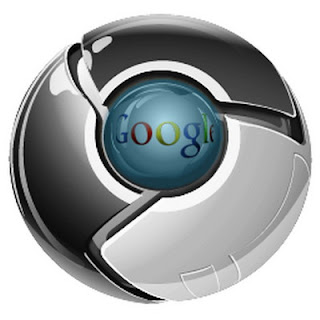Thursday, July 28, 2011

Google Chrome's speed at displaying Web pages is seemingly only matched by the speed with which its development team adds new features. With Chrome 12, Google has added a couple important security enhancements, and new 3D graphics capabilities. Other browsers like Firefox (Free, 4.5 stars), Internet Explorer (Free, 4 stars), Safari (Free, 4 stars), and Opera 11have flattered Google's entry by imitating its sparse user interface and lightning speed. Firefox's makers have even emulated Google's fast update schedule. But Chrome continues to lead the pack with its groundbreaking speed, support for new Web standards, and its minimalist application window that lets the Web page shine unimpeded. If you want a fast and fluid Web experience, Google Chrome 12 can't be beat.
Previous releases have brought new major features, such as bookmark syncing, a bookmark manager, a built-in PDF reader, and extensions, though others have just added speed, stability, and new standards support. Version 9 took a page from Google search, with the remarkable Chrome Instant, as well as from IE9, by including graphics hardware acceleration. Its fine design, compatibility, and especially the speed have impressed the Web community enough to make Chrome 12 the fastest growing browser in terms of market share, recently passing ten percent. Let's take a look at what makes this browser so special.
Swift Setup
Even the setup process shows Chrome's commitment to speed: Just click the Install button on the Chrome Web page, and you'll have the new browser up and running in less than a minute, with no wizard to go through and no system restart. The browser's now available for Mac OS X and Linux, as well as Windows. In each platform the browser's up and running before you realize it, and it updates itself automatically in the background.
Built-in Flash and PDF Support
Chrome 12 is the only browser to come with Adobe Flash built in, rather than requiring a separate (and annoying) installation. And not having to perform the frequent required updates of the Flash plugin separately is another boon—it updates automatically with the browser. With version 10, many of the security issues with Flash (famously bemoaned by Apple's Steve Jobs) went away, thanks to running the plugin in an isolated sandbox so that it doesn't have access to critical system areas. But note that this sandboxing only applies to the Windows 7 and Vista versions of Chrome 12 at this point.
Chrome 12 boasts a PDF reader as well, so you don't have to worry about installing any Adobe plugins for viewing specialized Web content. When you load a PDF, an intuitive toolbar shows when your mouse cursor is in the southeast vicinity of the browser window. From this, you can have the document fill the width of the window, show a full page, or zoom in and out. By default, you can select text for cutting and pasting, but I couldn't copy and paste images. You can print the PDF as you would any Web page.
Interface
Minimalism has been a hallmark of Chrome since its first beta release. Tabs are above everything, and the only row below them holds the combined search/address bar, or "Omnibar." Optionally you can display bookmark links in a row below this. And the control buttons on the top-right of the browser window have been reduced to the absolute minimum—just one. Google has removed the Page icon and placed some of its functions under the Wrench choice. Some Page options have been combined into buttons on one line in the new menu, such as Cut, Copy, and Paste. I like what Google's done with the Zoom choice on the menu, adding plus and minus buttons that save you from having to fly out another submenu.
Another theme in the Chrome interface is that everything looks like a Web page, displaying in the main browser window, rather than in separate dialog boxes. This includes the interfaces for History, Extensions, and Bookmarks. With version 10 the Settings page got this same treatment.
Chrome Instant
This is one of the niftiest things to be added to Chrome in a while. Start typing a Web address in the Omnibar, and before you're even done, a page from your history or a search result page is displayed below in the main browser window. I just type "PC," and PCMag.com is already loaded. The idea was first implemented in Google search's Instant feature, but I think it's even more useful in the browser than in search, where I usually ignore it and finish typing my query anyway: Most sites we visit, we've visited before, so having them ready to go before you even finish typing is a big speeder-upper.
Tabtastic
Chrome 12 also still sports excellent tab implementation. Tabs are prominent at the top of the browser window, and you can drag them out to the desktop to create independent windows (and drag them back in later) or split them side by side à la Windows 7 Aero Snap.
Google has put considerable thought into Chromes's new tab page, which shows links to your most-visited pages, Web apps, and recently closed tabs. All but the last can be expanded to large thumbnails, which you can move around and pin in place, or remove if you don't want them to appear.
Labels: iSoft
0 Comments:
Subscribe to:
Post Comments (Atom)